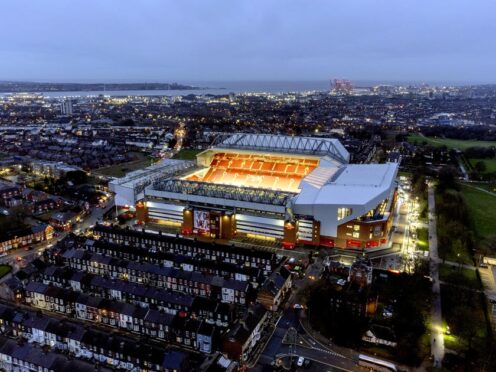
Liverpool made a pre-tax loss of £9million last season as increased commercial income did not offset a drop in money made from media and matchday revenues.
The previous 12 months had produced a small profit of £7.5m.
Liverpool’s biggest income stream in 2022-23 was the £272million, up £25m, generated from off-field income but a last-16 Champions League exit a year after reaching the final meant television money dropped by £19m to £242m.

Matchday revenue also fell by £7m due to fewer games being played across last season after the previous campaign when the club played in every fixture – a total of 63 – they were eligible for, winning both domestic cups and reaching the Champions League final.
While overall revenue remained the same at £594m, increasing costs are cutting into the balance sheet with staff expenses having increased 79 per cent since 2018, up from £208m six years ago to £373m for the year ending May 2023.
The wage bill in this period alone rose £7m to £373m.
Administrative expenses for that same period have increased by 70 percent from £320m to £562m, while utility costs have doubled from two years ago while rising inflation has driven up other costs.
“Operating this great club in a financially sustainable manner and in accordance with football’s governing principles has been our priority since FSG (Fenway Sports Group) acquired LFC in 2010,” said managing director Andy Hughes.
“Despite the significant growing costs of football, the success of our commercial operations demonstrates the strength of our underlying financial position so we can continue to operate sustainably while competing at the highest levels of football.
“While these financial results are a moment in time on our journey, what remains constant is the growing global appeal of the club and, thanks to our amazing support, LFC continues to be the most globally followed club in the Premier League.”
Matchday revenue will increase after the new Anfield Road stand was fully opened earlier this month, taking Anfield’s attendance to 61,000.
“Matchday revenue is a hugely important part of our overall financial sustainability model,” added Hughes.
During the reporting period Liverpool signed Darwin Nunez, Cody Gakpo, Calvin Ramsay and youth team goalkeeper Kornel Misciur for a combined initial fee of £105m but offloaded Sadio Mane, Divock Origi, Takumi Minamino and Neco Williams.
There were also significant contract renewals for Mohamed Salah – who became the highest earner in the club’s history with a reported £300,000-a-week deal – Joe Gomez, Harvey Elliott, Curtis Jones, Jarell Quansah, Stefan Bajcetic and Ben Doak.

Enjoy the convenience of having The Sunday Post delivered as a digital ePaper straight to your smartphone, tablet or computer.
Subscribe for only £5.49 a month and enjoy all the benefits of the printed paper as a digital replica.
Subscribe